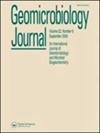Physico-Chemical Characterization and Phytotoxicity Assessment of Wastewater from Rock Phosphate Processing in Tunisia: From Seed Germination to Seedling Growth
IF 2.2
4区 环境科学与生态学
Q3 ENVIRONMENTAL SCIENCES
引用次数: 0
Abstract
Abstract CPG’s wastewater from phosphate ore processing was characterized and its phytotoxicity before and after physicochemical treatment inside washing units was investigated for the first time. Mineralogical, spectral, physicochemical and microbiological characterizations showed that these wastewaters are relatively alkaline due to the high calcium and phosphorus contents. In fact, numerous minerals mainly fluorapatite, clinoptilolite and gypse were identified. In addition to its high salinity (EC = 9890 µS cm−1), the BOD5/COD ratio is equal to 0.949, which allows for the estimation that this effluent is potentially biodegradable. The microbiological characterization revealed the presence of revivable aerobic bacteria as; total coliforms (TC), fecal coliforms (FC), Pseudomonas, anaerobic sulfite bacteria (ASR), and fungi (F), whereas a complete absence of Salmonella, Vibrio cholera (CV), and Helminth egg (HE) was noted. In the second part, the influence of varying concentrations of phosphate wastewater was studied on radish, lentil, wheat and fenugreek seeds. Phosphate effluents were provided at 10%, 25%, 50%, 75% and 100%. Results were compared with a control group of the same seeds, irrigated with tap water. Based on several germination tests, plant irrigated with treated or untreated effluent exhibited a prominent reduction in growth traits at all four harvests. Except plant treated with treated effluent at 25% which generally induced no significant phytotoxicity to all species and which can play a fertilizer role. The adverse effects occurred with effluent-dose dependent manner. The high toxicity of untreated effluent compared to the treated effluent was inferred from the results. Nevertheless, the treated ffluent is still toxic, except at very low concentrations acting as a fertilizer. Graphical Abstract突尼斯磷矿石加工废水的理化性质和植物毒性评价:从种子萌发到幼苗生长
摘要对CPG磷矿废水进行了表征,并首次对洗涤装置内理化处理前后的植物毒性进行了研究。矿物学、光谱、理化和微生物学表征表明,由于废水中钙、磷含量高,废水呈偏碱性。事实上,发现了许多矿物,主要是氟磷灰石、斜发沸石和石膏。除了其高盐度(EC = 9890µS cm - 1)外,BOD5/COD比值等于0.949,这使得该出水具有潜在的可生物降解性。微生物学特征显示存在可复性好氧细菌as;总大肠菌群(TC)、粪便大肠菌群(FC)、假单胞菌、厌氧亚硫酸盐细菌(ASR)和真菌(F),而沙门氏菌、霍乱弧菌(CV)和蠕虫卵(HE)则完全不存在。第二部分研究了不同浓度的磷酸盐废水对萝卜、扁豆、小麦和葫芦巴种子的影响。提供10%,25%,50%,75%和100%的磷酸盐废水。结果与用自来水灌溉的相同种子的对照组进行了比较。根据几项发芽试验,用处理过的或未经处理的污水灌溉的植物在所有四次收获中都表现出生长性状的显著降低。除了用25%处理过的废水处理的植物,一般对所有物种都没有明显的植物毒性,可以起到肥料的作用。不良反应的发生与出水剂量有关。与处理过的废水相比,未经处理的废水毒性高,这是从结果中推断出来的。尽管如此,处理后的废水仍然是有毒的,除非浓度很低,起到肥料的作用。图形抽象
本文章由计算机程序翻译,如有差异,请以英文原文为准。
求助全文
约1分钟内获得全文
求助全文
来源期刊

Geomicrobiology Journal
环境科学-地球科学综合
CiteScore
4.80
自引率
8.70%
发文量
70
审稿时长
3.3 months
期刊介绍:
Geomicrobiology Journal is a unified vehicle for research and review articles in geomicrobiology and microbial biogeochemistry. One or two special issues devoted to specific geomicrobiological topics are published each year. General articles deal with microbial transformations of geologically important minerals and elements, including those that occur in marine and freshwater environments, soils, mineral deposits and rock formations, and the environmental biogeochemical impact of these transformations. In this context, the functions of Bacteria and Archaea, yeasts, filamentous fungi, micro-algae, protists, and their viruses as geochemical agents are examined.
Articles may stress the nature of specific geologically important microorganisms and their activities, or the environmental and geological consequences of geomicrobiological activity.
The Journal covers an array of topics such as:
microbial weathering;
microbial roles in the formation and degradation of specific minerals;
mineralization of organic matter;
petroleum microbiology;
subsurface microbiology;
biofilm form and function, and other interfacial phenomena of geological importance;
biogeochemical cycling of elements;
isotopic fractionation;
paleomicrobiology.
Applied topics such as bioleaching microbiology, geomicrobiological prospecting, and groundwater pollution microbiology are addressed. New methods and techniques applied in geomicrobiological studies are also considered.
 求助内容:
求助内容: 应助结果提醒方式:
应助结果提醒方式:


